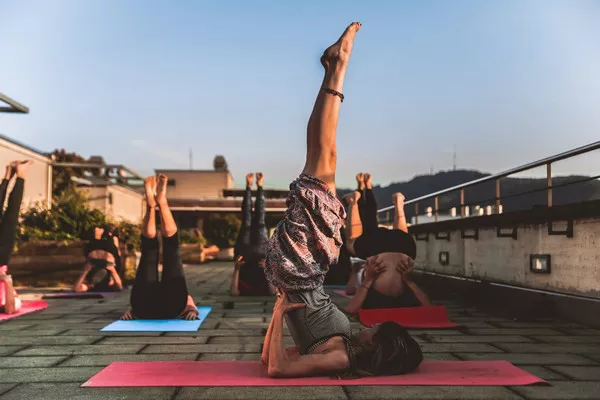Pimple scars, often an unwelcome reminder of past breakouts, have led individuals to explore various remedies in their pursuit of smooth and blemish-free skin. Among these, Vaseline, a household staple, has garnered attention for its potential to fade pimple scars. In this article, we delve into the science behind Vaseline’s effectiveness, its application, and alternative treatments for pimple scars, offering a comprehensive guide for those seeking to restore their skin’s radiance.
SEE ALSO: Effective Solutions for Pimple Marks: A Comprehensive Guide
Understanding Pimple Scars
Pimple scars, technically known as post-inflammatory hyperpigmentation (PIH) or post-inflammatory erythema (PIE), are the result of the skin’s natural healing process after a pimple or acne lesion. When the skin experiences inflammation, the production of melanin, the pigment responsible for skin color, can become disrupted. This leads to either dark spots (PIH) or red marks (PIE) that persist even after the pimple has healed. While these scars are not permanent, they can take weeks to months to fade naturally.
The Role of Vaseline for Pimple Scars
Vaseline, a brand name for petroleum jelly, has been lauded for its moisturizing properties and ability to create a barrier that prevents moisture loss from the skin. However, its effectiveness in treating pimple scars is a topic of debate in the dermatology community.
1. Moisture Retention
Vaseline’s occlusive properties can create a barrier that locks in moisture and prevents dehydration. This can contribute to overall skin health and aid in the healing process, potentially reducing the appearance of scars.
2. Scar Softening
Some proponents suggest that applying Vaseline to pimple scars can soften the skin and make scars less noticeable. However, scientific evidence supporting this claim is limited.
3. Limited Impact on Scarring
While Vaseline may help moisturize and soothe the skin, its ability to significantly fade pimple scars is limited. Pimple scars involve deeper layers of the skin, and Vaseline’s primarily surface-level effects may not penetrate deep enough to induce substantial change.
So Is Vaseline an effective remedy for pimple scars?
While Vaseline (petroleum jelly) has been suggested by some as a remedy for pimple scars, its effectiveness in significantly reducing or eliminating pimple scars is debated within the dermatological community. There are a few reasons for this:
1. Limited Penetration
Pimple scars involve deeper layers of the skin, including the dermis, where collagen and pigmentation changes occur. Vaseline primarily forms a protective barrier on the skin’s surface, and its molecules are too large to effectively penetrate to these deeper layers, where scar tissue is located.
2. Lack of Active Ingredients
Vaseline doesn’t contain active ingredients specifically designed to target scar tissue, such as retinoids, vitamin C, or alpha hydroxy acids (AHAs), which have been shown to be effective in promoting scar reduction and skin rejuvenation.
3. Individual Variation
Skin responds differently to various treatments. While some individuals may report improvements in the appearance of pimple scars with Vaseline, others may not experience the same results.
4. Scar Type
The type of pimple scar matters. Vaseline may have a more noticeable effect on dry, superficial scars, but it’s unlikely to have a significant impact on deeper scars like ice pick scars or boxcar scars.
5. Moisture and Texture
Vaseline can help keep the skin moisturized and create a barrier to protect the skin’s natural healing process. This may contribute to some mild improvement in the overall appearance of the skin, but it’s unlikely to be a potent scar treatment on its own.
Vaseline’s Actual Skincare Benefits
Vaseline offers a range of skincare benefits. It has been a trusted household staple for decades due to its versatile and effective properties. Here are some of the other skincare benefits of Vaseline:
1. Intense Moisturization: One of the primary benefits of Vaseline is its ability to lock in moisture and prevent water loss from the skin. It creates a barrier on the skin’s surface, keeping it hydrated and preventing dryness, especially in harsh weather conditions.
2. Barrier Protection: Vaseline acts as a protective barrier that shields the skin from external irritants, pollutants, and environmental aggressors. This is particularly useful for individuals with sensitive or easily irritated skin.
3. Healing Dry and Cracked Skin: Vaseline can be applied to areas of the body prone to dryness and cracking, such as elbows, knees, and heels. Its occlusive properties help to soften and heal rough, dry skin.
4. Lip Care: Vaseline is a popular ingredient in lip balms and treatments due to its moisturizing and protective qualities. It helps prevent chapped lips by locking in moisture and shielding them from the elements.
5. Makeup Remover: Vaseline can be used as a gentle makeup remover, effectively breaking down makeup products while moisturizing the skin at the same time.
6. Minor Cuts and Burns: Vaseline can be applied to minor cuts, scrapes, and burns to keep the wound moist, promoting faster healing and minimizing the risk of infection.
7. Preventing Chafing: Athletes and individuals who experience friction between skin surfaces (such as thighs) can use Vaseline as a preventive measure to reduce chafing and discomfort.
8. Tattoo Aftercare: Vaseline is often recommended for tattoo aftercare as it forms a protective barrier over the tattooed area, preventing moisture loss and reducing the risk of infection.
9. Skin Soothing: Vaseline can provide relief for irritated or red skin, whether due to sunburn, windburn, or other environmental factors.
10. Eyebrow and Lash Care: Applying a small amount of Vaseline to eyebrows and eyelashes can help condition and moisturize, contributing to healthier hair growth.
11. Nail and Cuticle Care: Vaseline can be used to moisturize dry cuticles and strengthen nails by preventing them from becoming brittle.
12. Preventing Diaper Rash: For babies, Vaseline can be used as a protective barrier to prevent diaper rash by creating a moisture-resistant layer between the skin and wet diapers.
13. Soothing Minor Skin Irritations: Vaseline can provide relief from minor skin irritations, such as itching, redness, and discomfort.
Alternative Treatments for Pimple Scars
When it comes to addressing pimple scars, a range of alternative treatments offers more targeted and proven approaches than Vaseline. These treatments leverage active ingredients, medical procedures, and dermatological expertise to promote scar reduction and skin rejuvenation.
1. Topical Treatments
Retinoids: These vitamin A derivatives stimulate collagen production, promote cell turnover, and help fade scars over time. Prescription-strength retinoids, such as tretinoin, are particularly effective for improving skin texture and reducing the appearance of scars.
Vitamin C: Known for its brightening and antioxidant properties, vitamin C can help fade hyperpigmentation and promote collagen synthesis, aiding in scar reduction.
Niacinamide: This versatile ingredient helps regulate sebum production, improve skin texture, and reduce redness. It can be beneficial for fading post-inflammatory hyperpigmentation (PIH).
Alpha Hydroxy Acids (AHAs): AHAs like glycolic acid and lactic acid exfoliate the top layer of the skin, promoting cell turnover and revealing fresh skin underneath. They can improve the appearance of scars and enhance skin texture.
2. Chemical Peels
Dermatologist-administered chemical peels involve applying a solution that exfoliates the outer layer of skin, promoting new skin growth and collagen production. Chemical peels can help reduce the appearance of scars and improve skin texture.
3. Microneedling
Microneedling, also known as collagen induction therapy, involves creating controlled micro-injuries in the skin using tiny needles. This stimulates collagen production and triggers the skin’s natural healing process, leading to scar reduction and improved texture.
4. Laser Therapy
Various laser treatments, such as fractional laser and intense pulsed light (IPL), target pigmentation and stimulate collagen production. These treatments can effectively address both hyperpigmentation and textural issues associated with pimple scars.
5. Dermal Fillers
Dermal fillers containing hyaluronic acid can temporarily plump depressed scars, making them less noticeable. This is particularly effective for shallow, indented scars.
6. Subcision
Subcision involves using a needle to break up the fibrous tissue that creates certain types of scars, helping to lift and smooth the skin’s surface.
7. Platelet-Rich Plasma (PRP) Therapy
PRP therapy involves using a patient’s own blood, processed to concentrate platelets and growth factors, which are then injected into the skin. This can stimulate collagen production and improve skin texture.
8. Dermatologist Guidance
Consulting a dermatologist is crucial for tailoring a treatment plan to your specific skin type, scar type, and individual needs. Dermatologists can recommend a combination of treatments to achieve the best results.
SEE ALSO: Scar Management: 9 Dermatologist-Approved Recommendations for Skin Healing
Conclusion
While Vaseline’s moisturizing properties can contribute to overall skin health, its role in fading pimple scars is limited. The key to effective scar treatment lies in targeted approaches, such as topical treatments, professional procedures, and dermatologist-recommended solutions. Understanding the underlying science behind scar formation and seeking guidance from skincare experts will empower individuals to make informed choices in their quest for skin rejuvenation. Remember, every individual’s skin is unique, and what works best may vary from person to person.
[inline_related_posts title=”Related Topics” title_align=”left” style=”list” number=”3″ align=”none” ids=”1858,1830,1793″ by=”categories” orderby=”rand” order=”DESC” hide_thumb=”no” thumb_right=”no” views=”no” date=”yes” grid_columns=”1″ post_type=”” tax=””]



































